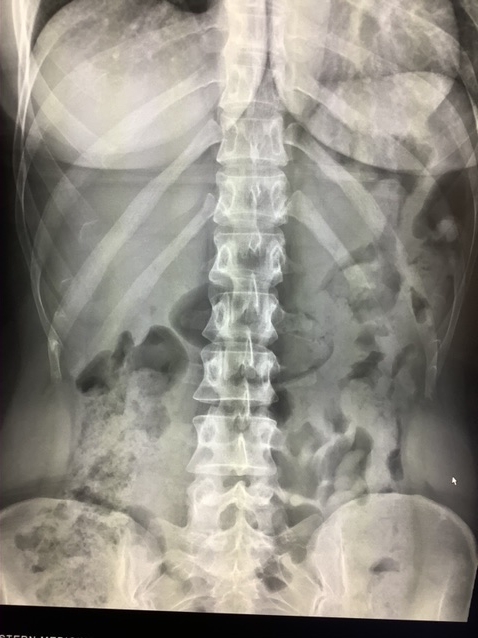Penetrating Aortic Ulcer
A penetrating aortic ulcer (PAU) occurs when an atherosclerotic plaque erodes through the inner lining of the aorta, creating a small ulceration that can penetrate into deeper layers of the aortic wall. PAU requires prompt medical attention and proper imaging for diagnosis and treatment. This article explains what a PAU is, how it appears on imaging, and what it means for patients when radiologists identify this condition.
What Is a Penetrating Aortic Ulcer?
A penetrating aortic ulcer develops when long-standing atherosclerosis (buildup of fatty deposits) in the aorta causes an area of plaque to erode through the innermost layer of the aortic wall, called the intima. This creates a small crater or ulcer that can extend into the middle layer of the aorta, known as the media.
The aorta is the main blood vessel that carries oxygen-rich blood from your heart to the rest of your body. When an ulcer forms in its wall, it weakens this critical blood vessel and can lead to serious complications.
How Common Are Aortic Ulcers?
Penetrating aortic ulcers are most common in older adults with a history of high blood pressure, smoking, or high cholesterol. They typically affect people over 65 years of age and are often discovered during imaging tests performed for other reasons.
Penetrating Aortic Ulcer Symptoms
Many patients with a PAU have no symptoms at all. The condition is frequently discovered incidentally during imaging tests for unrelated issues. However, when symptoms do occur, they may include:
- Chest pain or discomfort
- Back pain, often described as sharp or tearing
- Pain between the shoulder blades
- Shortness of breath
These symptoms can resemble those of other aortic conditions such as aortic dissection, which is why accurate imaging is important for proper diagnosis.
Imaging Features of Penetrating Aortic Ulcers
CT Scan Findings
Computed tomography (CT) with contrast is the most common and reliable method for diagnosing a penetrating aortic ulcer. On CT images, a PAU typically appears as:
- A contrast-filled outpouching or crater extending beyond the usual contour of the aortic lumen
- Thickening of the aortic wall around the ulcer
- Often associated with extensive calcification of the aorta
- Possibly surrounded by soft tissue density, suggesting blood has leaked into the aortic wall
Radiologists typically note this when they observe an irregular, contrast-filled pouch extending from the aortic lumen with adjacent wall thickening and calcification. The presence of nearby hematoma (collection of blood) may indicate that the ulcer has begun to leak.
MRI Appearance
Magnetic resonance imaging (MRI) can also identify penetrating aortic ulcers and may show:
- Signal abnormalities in the aortic wall
- The ulcer crater extending into the media layer
- Any associated intramural hematoma (blood within the aortic wall)
- The overall extent of atherosclerotic disease
MRI provides excellent soft tissue contrast and can be helpful in cases where the diagnosis is uncertain on CT.
Ultrasound Limitations
While ultrasound is less commonly used for diagnosing PAU, transesophageal echocardiography (TEE) may show:
- An outpouching or crater in the aortic wall
- Disruption of the normal aortic contour
- Thickening of the aortic wall
However, ultrasound has limitations in visualizing the entire aorta and may miss ulcers in certain locations.
Penetrating Aortic Ulcer vs. Aortic Dissection
PAU is part of a spectrum of acute aortic syndromes that includes aortic dissection and intramural hematoma. Understanding the differences is important:
- Aortic dissection involves a tear in the inner layer of the aorta, allowing blood to flow between the layers of the aortic wall
- PAU is a focal ulceration that penetrates through the inner layer
- Intramural hematoma is bleeding within the aortic wall without an intimal tear
On imaging, these distinctions are important as treatment approaches may differ.
Treatment Options for Penetrating Aortic Ulcers
Treatment depends on the location, size, and symptoms associated with the PAU:
- Medical management with blood pressure control for stable, asymptomatic ulcers
- Endovascular repair (stent grafts) for symptomatic or enlarging ulcers
- Open surgical repair for complex cases or when complications develop
Follow-up imaging is essential to monitor for progression or complications regardless of the initial treatment approach.
Complications of Untreated Aortic Ulcers
Without proper treatment, a PAU can lead to serious complications, including:
- Aortic rupture (complete tear of the aortic wall)
- Development of an aortic aneurysm (bulging of the weakened area)
- Progression to aortic dissection
- Formation of a pseudoaneurysm (contained rupture)
These complications appear distinctly on imaging and represent medical emergencies requiring immediate intervention.
Importance of Regular Imaging Follow-up
Patients diagnosed with a PAU require regular imaging follow-up to monitor for:
- Growth of the ulcer
- Development of an aneurysm
- Signs of impending rupture
- Response to medical therapy
Conclusion
A penetrating aortic ulcer represents a potentially serious finding on radiological imaging that requires careful evaluation and management. When radiologists identify a PAU on a CT scan or MRI, they are seeing evidence of advanced atherosclerotic disease that has eroded through the inner lining of the aorta. While many PAUs can be managed medically with close monitoring, others may require intervention to prevent life-threatening complications. Understanding what this finding means on your radiology report can help you have more informed discussions with your doctor about your cardiovascular health and treatment options.
References

